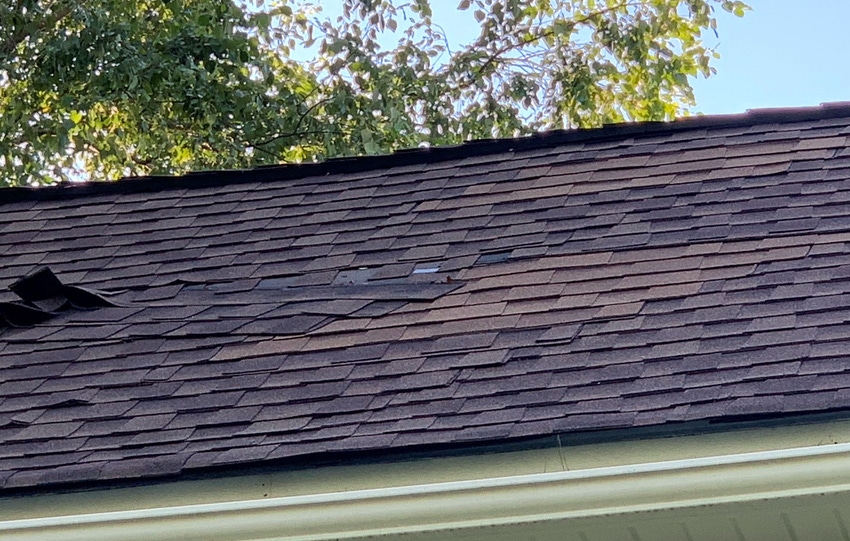
Getting the most from a peanut disease management program requires more than choosing fungicides, just as I have learned that protecting my home from rain is much more than shingles.
Ten years ago, I had the shingles replaced on my roof. Rather than choosing a well-established roofing companies, I took my neighbor’s suggestion and used some no-name roofer he knew, figuring since I purchased highly rated, long-lasting shingles, I had little to worry about.
For about the first six months, the plan worked. I saved $2,000 in the process. After about six months, one of the guys on the roofing crew pounded on my door late one Friday night asking if I remembered him (and the lady waiting in the car). He told me he had run out of gas and needed money. “No, that’s OK, Mr. Bob, just give me the money. You don’t need to go to the gas station with me…"
Soon after this, water stains begin to appear on my living room ceiling. Being Catholic, I was hopeful they would merge to form an image of the Virgin Mary. I soon realized the area around the chimney had never been properly sealed. The chronic problem has been that somehow the shingles are poorly attached to the roof and have had to be replaced to the point that my roof now resembles a patch-work quilt. Said one of the many who have replaced the shingles, “Mr. Bob, they had their nail guns set with too much pressure; those nails went right through the shingles.”
I called my roofer. He was in jail, and the company was out of business.
Why does my roof remind me of a peanut fungicide program? Primarily because it shows no matter how good a shingle or a fungicide may be, how the product is used can make the difference. I bought quality shingles, but picked the wrong roofer, and I have been paying for it ever since.
One of the biggest investments that peanut growers make during a season is in the cost of a disease management program. Fungicides are needed from the time the seed is put in the ground until within two to three weeks of harvest.
Judicious use of fungicides is critical to protect yield and maximize profit. Without fungicides, stand loss to seedling diseases would also increase risk to tomato spotted wilt virus. Premature defoliation from leaf spot diseases would weaken pegs, leaving hundreds of pounds of mature peanuts in the field or necessitate early harvest compromising yield and grade.
Without fungicides, disease like southern stem rot (white mold) and Rhizoctonia limb rot would scorch peanut fields as if by burning flames. A grower’s reliance on fungicides can be reduced by following steps presented in Peanut Rx (peanutrx.org), especially when planting disease-resistant varieties and extending years between peanut crops. Still, no matter what a grower does, a fungicide program will almost assuredly increase the harvest and the profit.
Over the past 25 years, the number of fungicides available to peanut farmers has increased dramatically. Bravo, Tilt, Folicur, Abound, and Moncut were once at the forefront, but have been joined, and often replaced, by a flood of newer products to include Alto, Domark, Mazinga, Absolute, Aproach Prima, Provysol, and Miravis for leaf spot control. Fontelis, Provost Silver, Elatus, Excalia, Convoy and Umbra are here to fight soilborne diseases; products Priaxor and Lucento bring strong leaf spot efficacy and some white mold power as well.
With so many fungicides on the market, it can be a challenge to make “head or tails” when hunting a most appropriate fungicide program.
The question I hear most often from growers is “What is the BEST fungicide I can use on my peanuts?” While some products will perform better under high-disease pressure than others, EVERY fungicide performs better when applied carefully and even the “best” fungicides may fail to control disease if applied incorrectly.
Key factors to a successful fungicide program include:
Applying fungicides ahead of disease.
Making sure to use sufficient spray volumes (gallons/A), ground speed, and spray tips.
Appropriate interval between applications.
Timing application with rainfall or irrigation.
Using the right product for the right situation.
Where I often see programs fail include:
Starting a fungicide program late and after disease is in the field.
Not making enough applications to protect a crop over the entire season.
Stretching intervals between applications too far.
Using an older product when a new product would have been better.
I can’t go back and change my choice of roofers from a decade ago. I live with that ill-advised decision every day. We are still early in the 2021 peanut season. Carefully craft a fungicide program that blends quality products with careful application measures for best success. And I hope it rains, just not too much on my house.
About the Author(s)
You May Also Like






